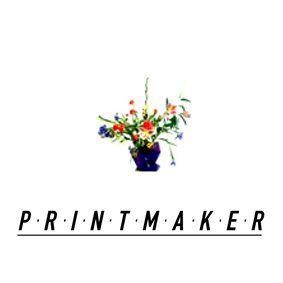Frequently Asked Questions
What is a Giclée print?
Giclée is a French word meaning squirt or spray. Although it describes the inkjet printing process succinctly, the term first came into use to describe "Iris" prints or high quality digital proofs for the lithographic print trade that could mimic the inking profile of a printer's proof. The currently held criteria to describe a giclée print is that it should be printed at a high resolution with pigmented inks that are lightfast and waterfast. These are transferred by inkjet onto an archival substrate such as an acid free watercolour paper or canvas. The process is ideal for short runs, one-offs and print-on-demand situations where you might not want to print the complete edition. Giclée printing has proved to be a very successful way for artists to produce faithful reproductions of their artwork.
What size originals can be scanned?
At the Printmaker Studio we can scan canvases, boards and works on paper up to approximately A1 size (59.5cm x 84.1 cm). For larger works we would recommend using a professional photographer.
What papers are available?
These are the archival papers we always have in stock and can therefore offer our best prices:
- Somerset Velvet Watercolour paper 255 g/sm (textured surface)
- Innova Smooth Cotton HW 315 g/sm (smooth surface)
Other archival papers we can supply are:
- Hahnemulhe German Etching 310 g/sm (hammered texture)
- Hahnemulhe William Turner 310 g/sm (rough texture)
- Innova Photo Pearl 310 g/sm. (mimics traditional chemical photographic paper)
- Innova Photo Lustre 260 g/sm. (as above)
- Fogra approved proofing paper.
Canvas Printing?
We can print onto specially primed canvas. Prints can be supplied rolled or stretched on standard sized stretchers. We add a 2-3 inch margin around the image to wrap around the stretcher bars. Please decide on the size of the finished canvas (excluding the wrap around) before requesting a price.
Dimensions of prints?
Prints can be supplied in any dimension or proportion you request within the constraints of the papers available.
In our price list we cite "A" sizes, because they are easily understood and also many artists want their artwork to be formatted to fit ready made frames. However, there is no need to order in standard "A" sizes if you want something different. Please request prices for bespoke projects.
How do I send digital files?
Files can be sent by email but often they are too big to send as attachments so we have a 'WeTransfer' page where you can upload your images :
chris-mercier-printmaker.wetransfer.com
We can accept most file formats such as: JPEG, JPG, TIF, TIFF, PNG, PSD, AI, EPS and PDF.
Please give your files working titles. This will be important when referring to them and re-ordering prints. (Images and files sent without a message or instructions will be ignored.)
Can I visit the Studio?
Yes, the studio is open weekday afternoons Monday-Thursday, 12.00 - 5.00pm. Please make an appointment so you are not disappointed or make a wasted journey.
What is the turnaround?
Scans take about one working week.
Prints onto paper from "print-ready" files take 1-2 days. For Editions and large orders please allow one working week.
Canvas prints that are stretched onto frames also take a while longer as we need to order the timber stretchers.
Busy times include the lead up to Christmas and the "open studio art events" in the spring and summer.
How do I pay?
When your scans and prints are ready you will receive an invoice by email. Payment can be made by bank transfer, credit/debit card, PayPal, cheque or cash.
What is an Edition?
A
closed or
limited edition has a set number of prints which are printed at the same size and from the same file or plate. They don't need to be printed all at once. Prints are usually annotated on the bottom edge by the artist like so:
1/50 Title of work
Signature Year
The first number is the number of the print, the second number being the limit of the edition. There is no set rule for the maximum quantity you choose but once you have set it, that's final. How you actually annotate them is entirely up to you. Traditionally they are annotated by pencil.
Some artists offer a "certificate of authenticity". This would simply be a contract between the artist and purchaser, that you could present as an accompanying document. This would include information about the artist, plus details of the paper and process used.
An
open edition has no maximum number set and prints are usually just signed.
Some artists will mark their prints with the symbol A/P. This indicates that it is an "artist's proof" and signifies that changes and edits may still occur before the final prints are produced.
FAQ Document ©
Chris Mercier 2022
